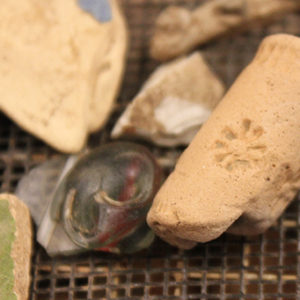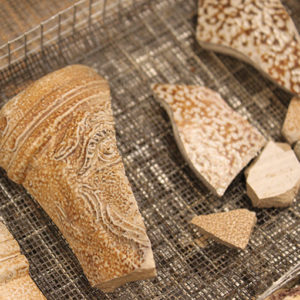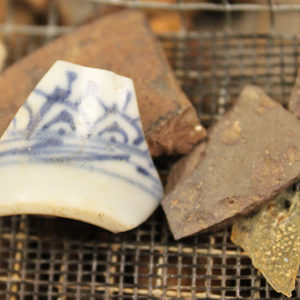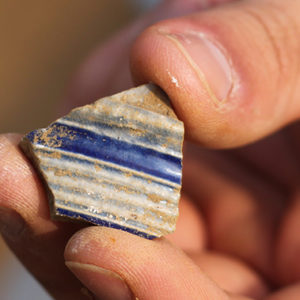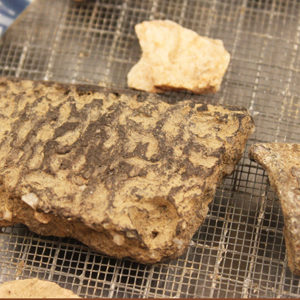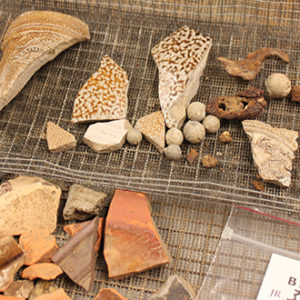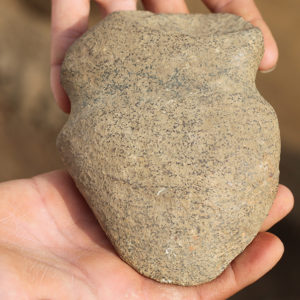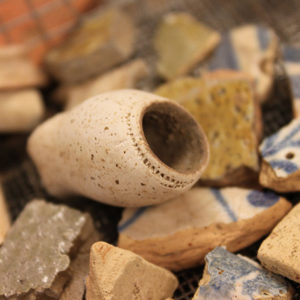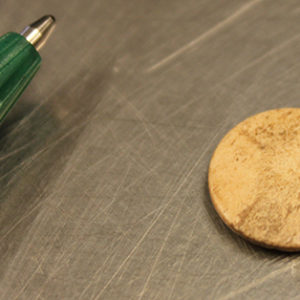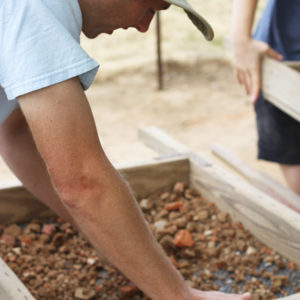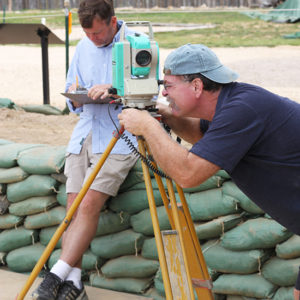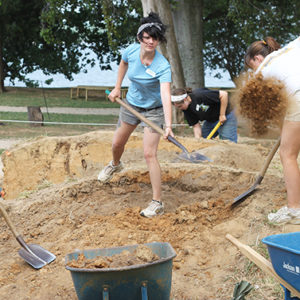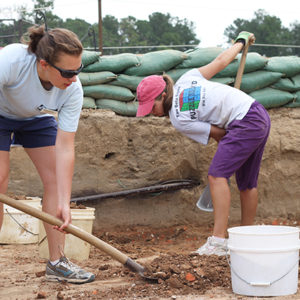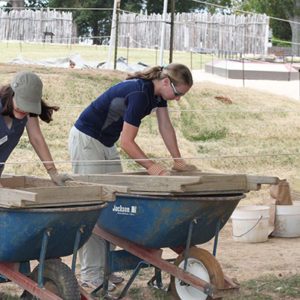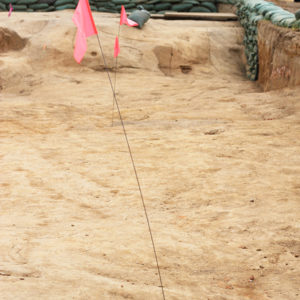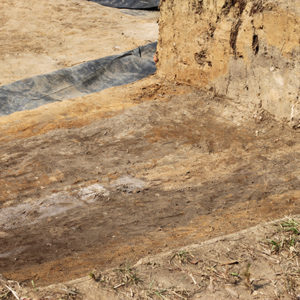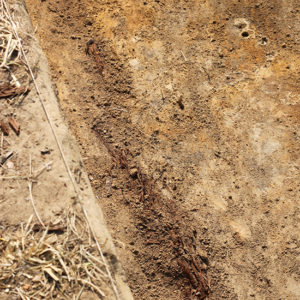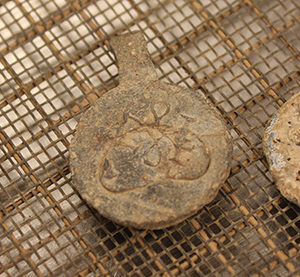The archaeological field school is in full swing and the Jamestown Rediscovery staff is using the extra manpower to conduct excavations in three separate areas of James Fort. The first dig location is just outside the northern bulwark where archaeologists are following an extension to the fort that turned its once-triangular shape into a five-sided structure. Close to the center of the fort, a second crew is working on uncovering the remains of the 1608 church, the likely marriage location of John Rolfe and Pocahontas. The final excavation site is the bombproof of Fort Pocahontas, a shelter for the Confederate forces who manned the fort defending the James River from Union advances toward Richmond.
Just outside the palisade wall of James Fort’s north bulwark, a team of field school students and archaeologists are following the line of a distinct soil stain heading to the east and north. The line, discovered during 2003’s excavation season, marks the location of a palisade wall that was part of an extension expanding the fort’s area. It is not known precisely when the extension was built nor how large it was, and the hope is that these excavations will provide some clues.
When the extension was first discovered, the Jamestown Rediscovery archaeologists were focused solely on the original 1607 fort and so the feature’s coordinates were mapped and the stain was buried under several inches of soil to preserve it for future archaeology.
As the team follows the stain, they’ve encountered a multitude of brick rubble, bits of iron, and charcoal. Sherds of European pottery are turning up as well, but perhaps the most interesting artifact found during these excavations so far is an axe head made by Virginia Indians.
Excavations at the 1608 church have uncovered a fifth posthole of the structure’s northern wall. Colonist William Strachey gave the dimensions of the church as being 60 feet long and 24 feet wide. With the fifth posthole, archaeologists have found a total of 48 feet of the wall. Two dozen feet to the south, the south wall’s matching fifth posthole has possibly been found, but years of soil removal, farming, and modern landscaping (including the placement of the John Smith statue just feet away) have taken their toll on the historic layers here and the possible posthole is thus far poorly defined. Excavations of the feature have been largely preliminary at this point and further digging may give the archaeologists enough evidence to decide if they have indeed found the south wall’s fifth posthole.
Artifacts are starting to turn up in greater numbers here as the excavations creep westward. Pipe stems and bowls, sherds of European and Virginia Indian pottery are being found, as are musket balls and archaic projectile points.
To commemorate the sesquicentennial of the Civil War, this summer’s third excavation site is the bombproof of Confederate Fort Pocahontas. The bombproof was an underground shelter where the soldiers could take cover in the event of an artillery barrage by Union gunboats. It was framed with wood and then insulated from enemy shells with several feet of soil. The fort never saw action as the Union advance under General McClellan came by land rather than by river and the Confederate garrison was ordered to withdraw west toward Richmond.
Wooden beams have been found here, with some of the wood still surviving its 150-year burial. It is thought that these may be part of the bombproof’s roof, though at this time this is largely conjectural. There are several parallel soil stains of varied muted colors in line with the wooden beams, but the archaeologists are still deciphering their form and function. James Fort-period artifacts are turning up during these excavations and the enslaved workers who built Fort Pocahontas undoubtedly noticed that the dirt they were working with was filled with evidence of another struggle two-and-a-half centuries earlier.
related images
- A fragment of a decorated locally-made pipe stem
- A lead runner cut from lead shot made in a gang mold
- A sherd of a Bartmann jug sits among recently-discovered artifacts
- A sherd of a Wan Li Porcelain wine cup
- A sherd of German stoneware found at the fort extension excavations
- A sherd of Virginia Indian pottery
- A tray of artifacts recently found in the field
- A Virginia Indian axe head found at the fort extension excavations
- An English tobacco pipe bowl
- An ivory button found during the church excavations
- Archaeologist Danny Schmidt examines an artifact found while screening soil
- Archaeologist Mary Anna Richardson works at the fort extension dig. The dark linear stain to her left marks the location of the extension’s palisade wall.
- Archaeologists David Givens and Dan Smith record features of the 1608 church
- Field school students at the Confederate bombproof
- Field school students digging at the 1608 church
- Field school students search for artifacts in the soil excavated from the 1608 church fill
- Flags mark the locations of postholes along the church’s south wall.
- Parallel soil stains at the bombproof excavations
- Scraps of wood still survive from the Confederate bombproof
- Lead cloth seals



